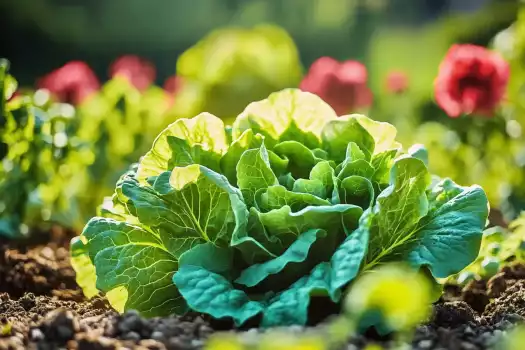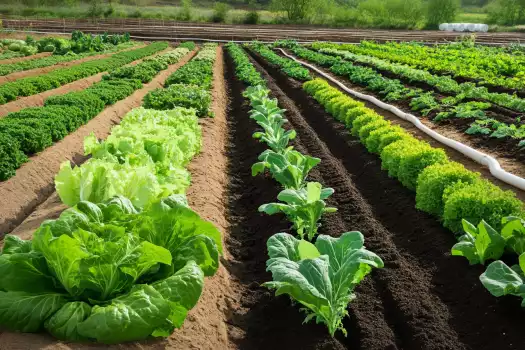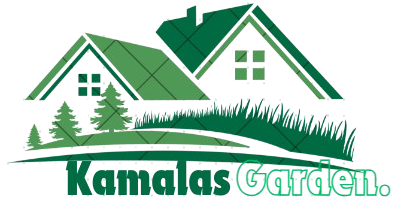Growing lettuce year-round allows you to enjoy fresh, healthy greens no matter the season. Whether you’re a beginner or an experienced gardener, these tips will help you choose the best varieties, manage care throughout the year, and ensure continuous harvests.
1. Why Grow Lettuce Year-Round?
There are plenty of reasons to grow lettuce throughout the year. Not only does it ensure you always have fresh produce at hand, but it also offers other benefits that go beyond just the taste.

Benefits of Growing Lettuce Year-Round:
- Fresh Supply: Having homegrown lettuce means fresh salads at any time, directly from your garden.
- Cost Savings: Growing your own greens reduces grocery costs over time.
- Healthy Eating: Lettuce is rich in vitamins and antioxidants, supporting a nutritious diet.
Climate Adaptability:
Lettuce can be grown in a variety of climates, from cooler areas to warmer regions. With the right growing techniques, you can adapt the process to ensure success no matter where you live.
2. Selecting the Right Lettuce Varieties for All Seasons
Success in growing lettuce year-round begins with choosing the right varieties. By selecting types suited to specific seasons, you can maintain a steady supply regardless of the weather.
Cool-Season Varieties:
- Butterhead and Romaine: These varieties are perfect for spring and fall since they thrive in cooler temperatures.
Heat-Tolerant Varieties:
- Batavia and Oakleaf: These lettuce types are more resistant to bolting, making them ideal for the summer heat.
Winter-Hardy Varieties:
- Winter Density and Arctic King: Cold-resistant varieties like these can tolerate frost and thrive even in winter gardens.
3. Preparing Your Garden for Year-Round Lettuce Growing
Proper preparation is crucial for growing lettuce successfully across all seasons. From soil preparation to choosing the best planting spots, careful planning can make a huge difference.
Optimal Soil Preparation:
Lettuce requires well-drained, fertile soil rich in organic matter to flourish. You should also amend the soil with compost before planting to enhance its nutrient content.
Planting Locations:
- Sunlight and Shade: For optimal growth, select sunny spots during cooler seasons, and create partial shade during hotter months. This helps keep the soil cool and reduces stress on the plants.
For more tips on optimizing soil for vegetable gardening, check out this guide.
4. Planting and Succession Planting for Continuous Harvests
One of the best ways to ensure a steady supply of lettuce year-round is by practicing succession planting. Staggering your planting times allows for continuous harvests.
Succession Planting:
Instead of planting all your lettuce seeds at once, sow new seeds every 2-3 weeks. This ensures that as you harvest mature lettuce, new plants are always growing to take their place.
Sowing Techniques:
Lettuce seeds can be sown in raised beds, garden soil, or containers. Raised beds are preferred for better drainage, while containers allow for flexibility, especially if you need to move plants indoors during extreme weather.

5. Care and Maintenance for Lettuce Throughout the Year
Maintaining lettuce throughout the year requires attention to watering, fertilizing, and general upkeep. Each season may demand different strategies for optimal growth.
Watering and Humidity Management:
- Consistent Moisture: Lettuce needs consistently moist soil, but avoid waterlogging. Adjust your watering schedule depending on the season to maintain this balance.
Mulching:
Mulch is essential for regulating soil temperature and moisture. In the summer, it keeps the soil cooler, and in the winter, it helps retain warmth.
Fertilizing Tips:
To keep your lettuce growing fast and healthy, apply organic compost or a balanced fertilizer periodically throughout the growing season.
Pruning and Thinning:
Regular thinning of seedlings ensures that each plant has enough space to grow. Additionally, removing damaged or older leaves encourages the plant to direct its energy toward new growth.
6. Growing Lettuce in Different Seasons
Adapting your techniques to each season allows you to grow lettuce year-round successfully. For example, growing in the heat requires different care than growing in cold weather.
Growing Lettuce in Summer:
During hot months, lettuce can bolt quickly. To prevent this, create shade using cloths or plant in cooler microclimates. Also, opt for heat-tolerant varieties and adjust your watering to ensure plants stay hydrated.
Growing Lettuce in Winter:
For winter growing, cold frames, greenhouses, or indoor grow lights are perfect for extending the season. Use frost protection methods, such as row covers, to shield your plants from cold damage.
7. Pest and Disease Control for Year-Round Lettuce
Lettuce is a target for pests and diseases, but with proper prevention and control techniques, you can keep your plants healthy.
Common Pests:
Aphids and slugs are common problems for lettuce. Use organic solutions like neem oil or set up physical barriers, such as copper tape, to protect your plants.
Disease Prevention:
Fungal diseases like downy mildew can affect lettuce, especially in moist environments. Ensure good air circulation and avoid overhead watering to prevent the spread of fungal infections.
For additional pest control tips, visit this guide on growing lettuce effectively here.
8. Harvesting and Storing Lettuce for Maximum Freshness
Knowing how and when to harvest lettuce ensures maximum freshness and flavor. Proper storage also extends the shelf life of your harvested greens.
Harvesting Techniques:
Lettuce leaves should be harvested when young and tender, while head lettuces can be picked when the heads are firm. Regular harvesting encourages further growth and ensures a continuous supply.
Storing Lettuce:
Store your harvested lettuce in the refrigerator, wrapped in a damp cloth or in a plastic bag, to keep it fresh for up to a week.
9. Indoor Lettuce Gardening for Year-Round Supply
Growing lettuce indoors is an excellent way to ensure a continuous harvest, even during extreme weather conditions. By setting up the right conditions indoors, you can grow lettuce no matter the season.
Growing Lettuce Indoors:
To grow lettuce indoors, use containers and set up LED grow lights that mimic sunlight. Be sure to maintain ideal indoor temperature and humidity levels for optimal growth.
adapting your care based on the season, you can enjoy a continuous harvest of lettuce regardless of the climate.
Frequently Asked Questions (FAQ)
Q: Can I grow lettuce year-round in any climate?
A: Yes! By selecting the right varieties and using protective methods such as cold frames or grow lights, you can grow lettuce in almost any climate year-round.
Q: What is the best variety of lettuce for winter growing?
A: Winter-hardy varieties like ‘Winter Density’ and ‘Arctic King’ are great options for winter gardening.
Q: How do I prevent my lettuce from bolting in summer?
A: Use shade cloth, water frequently, and plant heat-tolerant varieties to prevent bolting during hot weather.
Conclusion
Growing lettuce year-round provides fresh, homegrown greens no matter the season. By selecting the right varieties, using succession planting, and managing conditions effectively, you can enjoy a continuous supply of delicious lettuce.


1 thought on “Growing Lettuce Year-Round: Tips for Success”